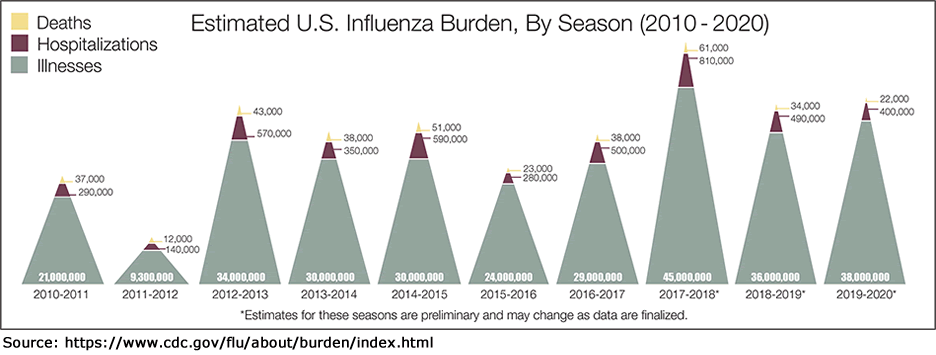
Overview

Click here to visit the CDC Influenza Surveillance page
Influenza
(flu) and the common cold are both highly contagious viral upper respiratory
infections.
But that is where the similarities end. The common cold is usually just
a nuisance, characterized by a sore throat, rhinitis and
a cough. In contrast, influenza, can be debilitating and
even
deadly.
Influenza
often involves high fevers (101-106° F), headaches, muscle and joint aches,
extreme exhaustion and pneumonia. It is pneumonia that is ultimately
the cause
of many influenza related deaths.
Every year, 5 to 20 percent of Americans come down with the flu. Most people will
recover in one to two weeks, but some people will develop life-threatening complications.
Annually, hundreds of thousands of Americans are admitted to the hospital, and tens
of thousands of Americans die as a result of flu.

Influenza viruses cause disease among all age groups. The rate of infection is highest among children, but serious illness and death are most frequent in the over 65 age group, and persons of any age who have chronic immune, respiratory or cardiac conditions. The flu often exacerbates conditions like asthma and congestive heart failure. Pregnancy also increases the risk of serious complications during epidemics.
Advances in the understanding of the viral life-cycle, its genome and rapid identification of viral protein composition, are beginning to yield more effective vaccines and antiviral medications. The current challenge is to educate health professionals and the general public about their ability to reduce the severity of the next influenza epidemic.
Instant Feedback:
© RnCeus.com